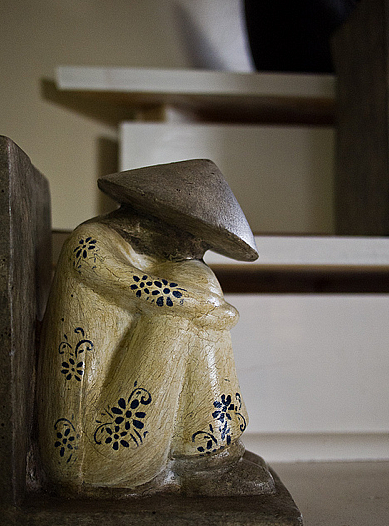Exploring cultural competency and mental health


A community's mental health is difficult to quantify: It's highly dependent on self-reporting and deeply entwined with cultural context. While physical health problems are easily spotted, mental health issues are harder to see – and often harder to fix. This is especially true for minority communities, which view and experience mental health differently than mainstream American culture.
Over the next six months, I'll be working with KALW 91.7FM as a California Endowment Health Journalism fellow on the public radio series "Inside Out," which will begin a conversation about the mental health of Asian American Pacific Islanders (AAPIs). These radio and multimedia stories will examine the experience and understanding of mental health from the perspective of several Bay Area residents of differing AAPI ethnicities. And they'll reveal barriers to care, like cultural stigma and language challenges, while illustrating the complex ways in which people understand, experience and deal with this highly personal public health issue.
Asian American Pacific Islanders are a minority in the U.S., making up just 5% of the nation's population. The latest census shows, however, that AAPIs are one of the fastest growing population in the country and state, especially in the Bay Area and Los Angeles. But while AAPI numbers grow, AAPIs remain the least likely of all ethnic groups to seek mental health services, a fact that is especially alarming in light of a recent report from the National Association of Mental Illness documenting high rates of depression and suicide among AAPIs, particularly Southeast Asians.
AAPIs often have difficulty accessing physical health care, and mental health presents a similar challenge. And as with physical health, the problems run much deeper than access. Cultural beliefs and values play a critical role in how AAPIs understand their own mental health issues. For example, some older, foreign-born AAPIs lack a westernized vocabulary for emotional distress; mental conditions are understood as physical ailments. Hwa-byung, or fire illness, is a Korean culture-bound disorder that materializes in the body as a response to an emotional disturbance. Shenjing shuairuo is directly translated from Mandarin to mean "nerve weakness;" westerners call it "major depressive disorder." For AAPI youth born in the U.S., pressure from the model minority myth and cultural avoidance of shame and stigma remain powerful influences when dealing with mental health problems. Talking about one's problems to an outsider is looked down upon, and social support tends to be implicit rather than explicit.
A complete portrait of AAPI mental health is only just beginning to form – the Asian American Center on Disparities, based at U.C. Davis, is only a few years old. As we begin to understand the intersection of mental health and culture, we will need to examine just what culturally competent care means, and whether the western paradigm of diagnosis and medication is the most effective way to approach AAPI mental health.
"Inside Out" will run at a time when funding for mental health is becoming more and more competitive: This year, California will spend $1.4 billion less on mental health services than it did just two years ago, though the need has not diminished. Drawing attention to this underreported is critical as city, county and state governments decide how to target their outreach.
I look forward to the guidance that the California Health Journalism fellowship will provide for "Inside Out," including how to mine for data on an issue that is largely dependent on self-reporting. I'm currently developing relationships with different Bay Area organizations that have pioneered the idea of cultural competency long before it became an integrated part of medical training. And I hope to provide an opportunity for audience members to share their own experiences, as well as offer critiques of AAPI mental health depictions and treatment.
I'm thrilled to be a part of the Reporting on Health community, and welcome your suggestions, resources, and/or personal stories as I develop "Inside Out." Hopefully this project not only illuminates the nuances of AAPI mental health, but also brings to light the way Americans view and treat mental health in general.

